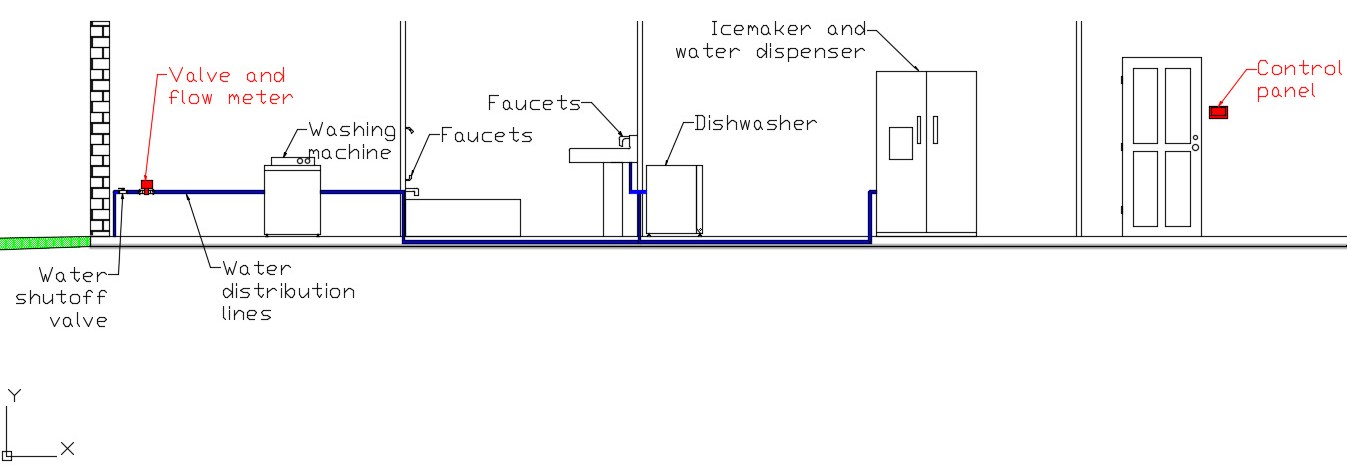Automatic Water Shut-off Valves
To anyone that has ever had a water line burst in their house, it is clear, the uncontrolled discharge of water into an occupied space is a problem.
To anyone that has ever had a water line burst in their house, it is clear, the uncontrolled discharge of water into an occupied space is a problem. Costs associated with removal of the discharged water includes the costs to dry and repair the wetted areas and contents, and living expenses for the owners while the house is being repaired.
Many homeowners are installing automatic water shutoff valves (also referred to as flow control systems, or leak detection systems) to prevent and/or limit the damage from an uncontrolled discharge of water. The design of the flow control systems vary by the manufacturer; however, the basic components include a flow control valve, flow monitoring device, and a control panel. The flow control valve is installed in the main water supply line between the water shutoff valve and the water distribution lines. Water lines that require an uninterrupted supply of water, such as fire suppression systems and boilers, should not be connected to the flow control system.
The flow monitoring device is typically an integral part of the flow control valve assembly. The flow monitoring device identifies the volume of water, as a percentage of full flow; that enters the water distribution lines. The control panel is installed near an entry/exit door which enables the homeowner to manually turn the water supply “Off” when leaving the house and “On” when returning. In addition, the flow control system automatically turns the water “Off” when the water flow exceeds the flow rate setting for a specified time period.
For example, 10 percent of full water flow is commonly used as the flow rate setting. A time period setting of 15 minutes is also common. A flow rate exceeding the 10 percent flow rate setting for a 15 minute time period closes the flow control valve and shuts off the water supplied to the distribution lines. The control panel signals the homeowner with an audible alarm when the flow control system has activated (Figure 1).

Appliances, such as a washing machine or dishwasher, will exceed the 10 percent flow rate setting; however, water flows for less than 15 minutes when a washing machine or dishwasher is in operation. Therefore, the flow control system will not activate during operation of appliances. The flow rate setting and time period setting can be adjusted by the homeowner or installer if needed.
The flow control system earns its merit when an unexpected water discharge takes place while the homeowner is away. Water will flow for the time period setting and the flow control system will automatically shut off the water, thereby limiting the volume of water discharged into the occupied space. Flow control systems are often installed in vacation homes, homes with expensive furnishings, and multi-story dwellings. A flow control system can provide the homeowner with a way to detect water leaks and protect their property against water damage from unexpected water discharge.
Below are some additional figures of a water shutoff valve:

